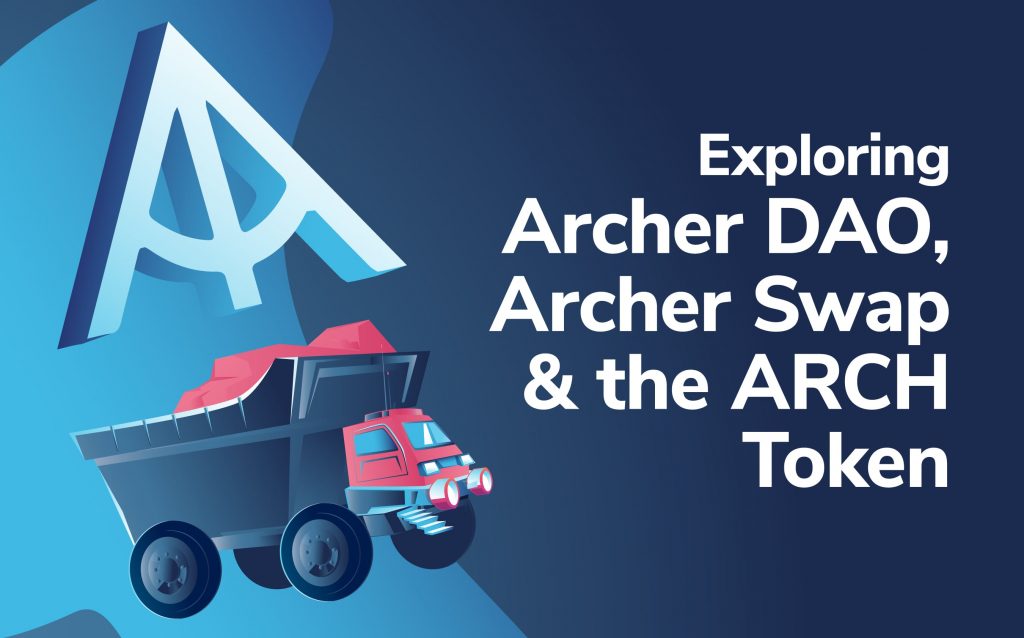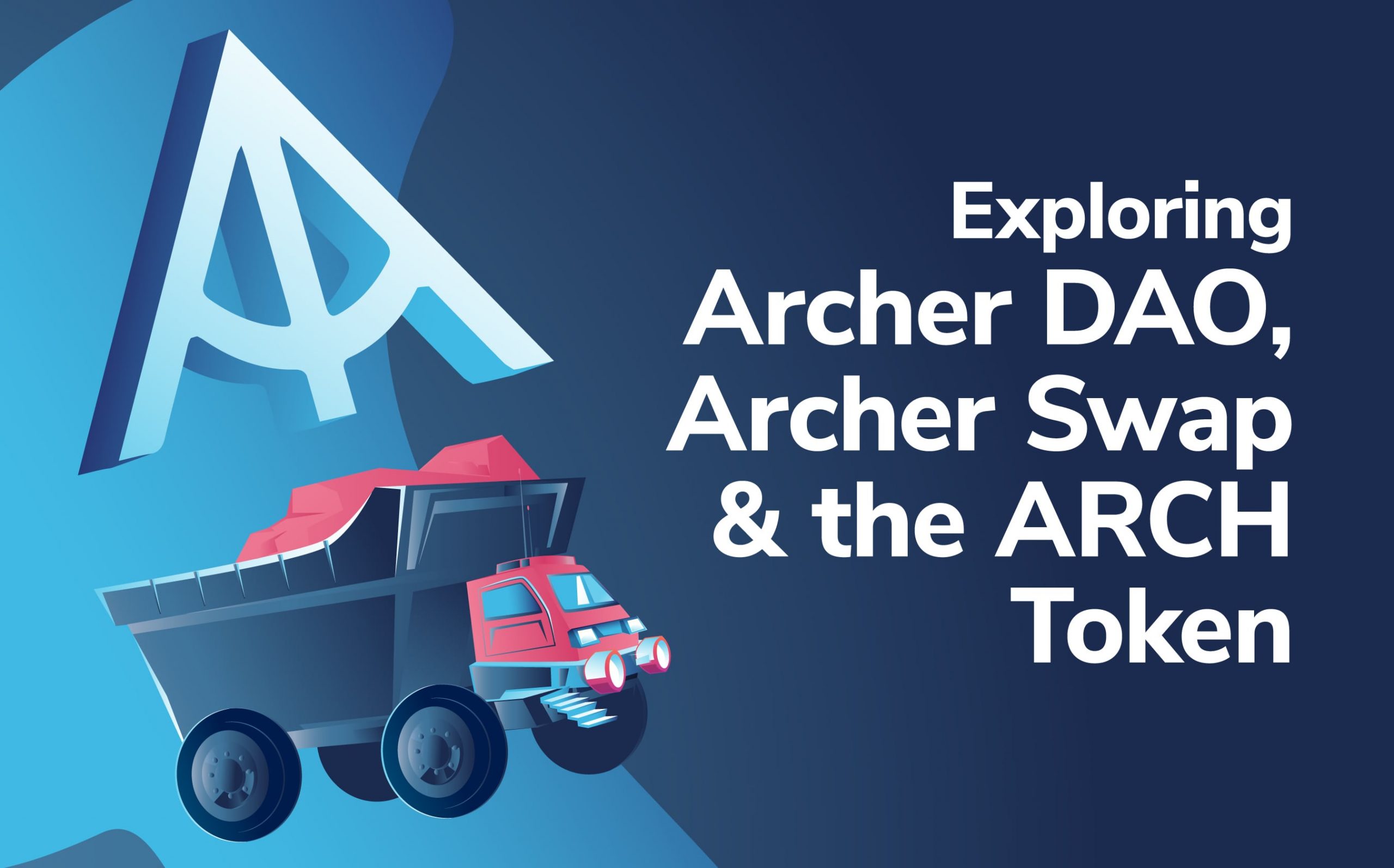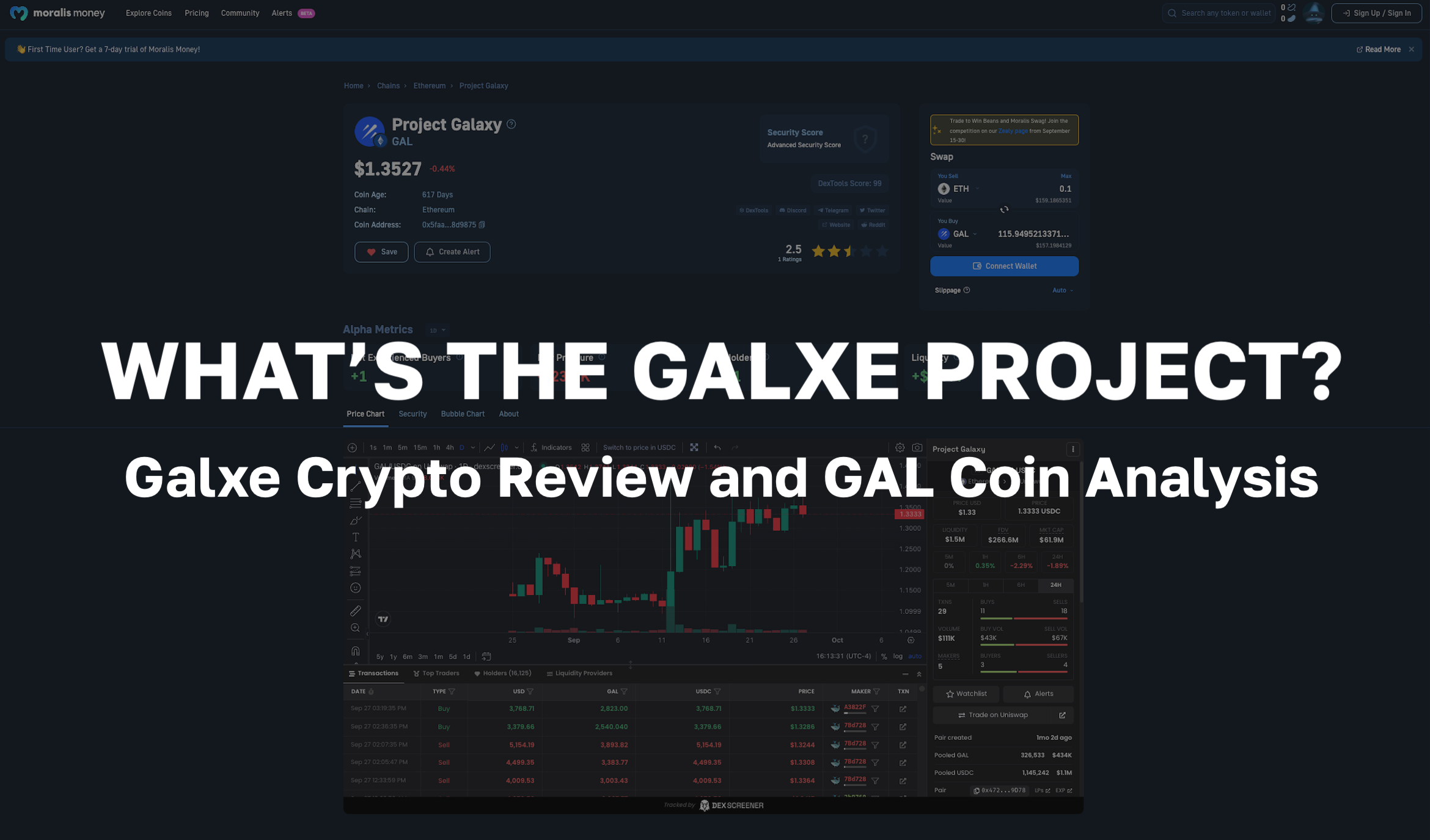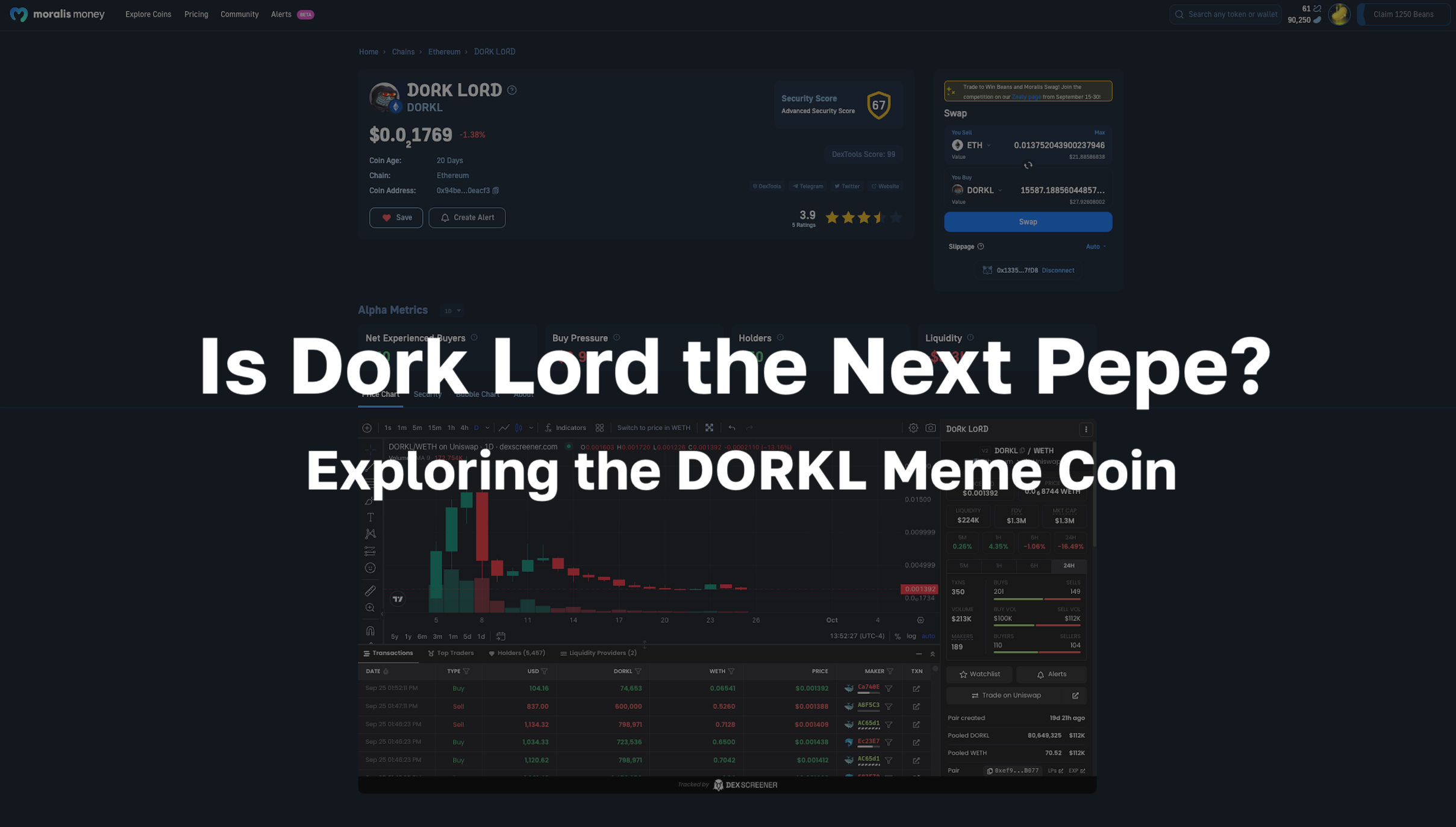
Archer Swap is for traders who transact on decentralized exchanges (DEXs) and want zero slippage trades with no cancellation fees. With Archer Swap, traders can achieve both goals since miners directly package their transactions. So, Archer Swap bridges the gap between traders and miners. Learn all about Archer DAO, Archer Swap, and the Archer Relay network in this article!
In this article, we’re going to cover how Archer Swap achieves zero slippage and helps prevent Front Running and Sandwich Attacks. We’ll also look at Archer DAO and the ARCH token. If you want to trade the cryptocurrency markets, you’ll need to learn more about on-chain analysis. Also, make sure to check out the Algorithmic Trading & Technical Analysis course at Ivan on Tech Academy.
What is Archer Swap and Archer DAO?
Archer Swap is not a DEX per se. It’s an extension that works on top of a DEX that offers a better UX with added features. Its superpower is that it brings the positives of decentralization but with central exchange benefits. DEXs are part of the decentralized finance (DeFi) ecosystem. You can learn more about DeFi in this introductory article if necessary.
With Archer Swap, traders can negotiate with miners, so they don’t include it on-chain if a transaction fails. This factor is a game-changer for big traders who are tired of arbitrage bots sandwiching them.
But before we dig deeper into the features of Archer Swap and Archer DAO, let’s look at Front Running and Sandwich Attacks so you can better understand what Archer Swap can do.
What Is Front Running?
When anyone transacts on Ethereum, it goes into what’s called a mempool. Each Ethereum node has a mempool which is a queue of pending transactions on the network layer. These transactions have not been packaged into blocks yet. However, the network has broadcasted their presence.
So, Front Running happens when a bot pre-empts a standard transaction. The Front-Running bot searches for victims by scanning transactions in the mempool so an attacker can jump ahead of the trade. The most typical kind is a Sandwich Attack.
What is a Sandwich Attack?
Now the great thing about DEXs like Uniswap is that they are non-custodial with no KYC. However, their pricing formula is not private, and with all this transparency, the door is open for Sandwich Attacks. In other words, since the mempool is publicly viewable; arbitragers can get ahead of the trade.
The Sandwich Attack involves Front Running a victim’s trade by buying the same asset and then back-running the victim’s trade.
Breaking Down the Sandwich Attack
Sandwich attacks are more common than you might think, and regardless of whether the attacker is taking liquidity or providing it, they follow a similar course.
1. Detect the victim’s transaction.
2. Front-Run the victim’s transaction.
3. Victim transacts and suffers higher slippage.
4. Attacker then back-runs the victim.
Here’s an example of how it works. Let’s say the victim trader makes a large purchase of Token-X. A bot sniffs out the transaction and Front-Runs the victim by purchasing Token-X before the large trade is approved. This purchase raises the price of Token-X for the victim trader and increases the slippage (the price the trader thought they were buying Token-X for versus what they end up paying). After the trader’s large purchase of Token-X gets executed, the attacker then sells his/her amount of Token-X for a profit.
So, what’s happened is, front-running bots saw the big purchase coming allowing the attacker to jump ahead of it. This purchase raised the token price for the victim trader while the sandwich attacker profited on the difference. Attacker buys cheap. Victim buys at a higher price. The attacker then sells at a higher price.
This kind of attack is not new. Vitalik Buterin (Ethereum co-founder) even talked about improving front-running resistance in 2018.
Centralized exchanges have also had to deal with similar attacks like predatory trading. However, regulations are in place to deal with it. DEXs, on the other hand, don’t have it so easy when it comes to dealing with Sandwich Attacks. All in all, it’s a complex problem for public blockchains to solve.
If you’re ready to take a deep dive into securing the Ethereum network, check out the Ethereum Smart Contract Security course at Ivan on Tech Academy.
How Archer Swap Mitigates Front Running
It’s the Archer Relay Network that powers Archer Swap and it mitigates many of the downsides that DEX traders have traditionally faced. Swap. There, users can submit transactions privately to guard against Front Running. When users activate Archer Swap, they can set slippage to 0% and bypass the mempool, making Front Running nearly impossible.
In short, trader benefits come in zeroes with Archer Swap.
1. Zero sandwich attacks
2. Zero slippage on swaps
3. Zero fees for canceled orders
4. Zero cost for transaction failures
Tips vs. Gas Fees
In the world of Archer Swap, tips replace traditional gas fees. Thanks to the Archer Relay network (Archer DAO’s breakthrough relayer), users can bypass the public pool and negotiate directly with miners for block space. Traders only pay tips to miners after a successful transaction. It’s kind of like tipping the wait staff when the restaurant service is good. By tipping them, miners’ incentives to put failed transactions in a block disappear.
Also with if a transaction fails Archer Swap, traders can toggle between SushiSwap and Uniswap when swapping tokens and engage with a familiar UI. We’ll look at the Archer DAO later in the article.
Who Should Use Archer Swap?
The Archer Relay Network offers large traders the best price possible on Uniswap and SushiSwap by alleviating the problem of Front Running bots. However, since everything is still new and experimental, pioneers are warned to use it at their own risk.
Three Ways to Use Archer Swap
Below are three scenarios of how users can save time and money with the Archer Relay network.
Archer Swap Use Case #1
Trades over $10,000.
Users can save money on the Archer Relay network for large DEX trades rather than going directly through Uniswap or SushiSwap. These platforms broadcast transactions to a public pool before execution which opens them up to Sandwich Attacks.
These DEXs have a default slippage of 0.5%, so that is the percentage a bot can extract from a user’s trade. The pricier the swap, the greater the profit potential for the attacker. Hence, it’s not surprising that more significant transactions invite Sandwich Attacks.
The $10,000 mark seems to be the tipping point because, with 0.5% slippage, a $50 profit is possible. The target, however, can go as low as $2,500 if the slippage is at 2%. Archer Swap prevents such attacks by conducting transactions on a private network where bots can’t see them.
On the negative side, traders may feel like they’re using the Archer Relay network to pay the miners’ “protection money.” Kind of like when business owners in affected neighborhoods have to pay off organized criminals. However, in the Archer Relay Network case, tipping the miners ends up costing traders less than getting sandwiched.
Archer Swap Use Case #2
Selling large on a coin dump.
Let’s say you have over $10k worth of a coin, and suddenly it comes under heavy sell pressure. If you try to dump your holdings at once using the DEX’s default slippage of 0.5%, your trade will likely fail. That’s because the price will probably drop more than 0.5% by the time your order goes through. So, you’ll get hit with a failed transaction fee and have to reattempt the sale at an even lower price.
What happens in such situations is that your trade goes to a mempool for processing. Before you trade executes, the token’s price has already dropped below the slippage threshold because of other panicked sellers and Front-Running bots that beat you to the punch.
One possible solution is to increase the slippage tolerance. If you bumped it up to 10%, your chances of completing the trade would increase. But you would open yourself up to an arbitrage attack big time.
So, an excellent use case for Archer Swap is to complete a large sale order when everyone else is dumping. Even if the transaction doesn’t go through, you won’t get hit with a failed transaction fee to add to the misery.
Archer Swap Use Case #3
Go long on a coin that’s pumping.
Trying to buy a coin that’s pumping is called “sniping.” So when you want to snipe with a $10k plus trade, you’ll need a first-mover advantage. Let’s say you want to snap up a new coin just listed on Uniswap that’s attracting a lot of attention. Maybe a social media influencer has been shilling the token, and there’s lots of buying pressure. So, naturally, you want to snipe before the price tops out.
You could try and submit buy orders, but if they keep failing, you’ll get eaten up with failed transaction fees. When too many buyers try to purchase at once, they can push the price beyond your slippage percentage. This scenario is similar to the panicked sellers, but Archer Swap could be the solution once again.
With the Archer Relay Network, you can submit your purchase order at the front of the next block ahead of the others waiting in the mempool. So your trade is more likely to go through. Archer Swap is like trading on a red carpet. You get to move past the masses to the front of the line—and it’s private. No one will know about your attempt to purchase.
In such situations, you can submit another transaction freely. The only negative is the token price will have moved higher by the time you resubmit. Yes, the cost of the token may be rising, but at least you won’t get chewed up by failed transaction fees on each attempt during hot markets.
Vitalik Buterin and Archer Swap
Vitalik used Archer Swap to unload his meme and doggy coins in a re-gifting move. Blockchain records show that the creators of AKITA, ELON, OSHIB, and mwDOGE sent lots of tokens to Vitalik’s public wallet.
The founders were probably hoping for some publicity in return for their questionable benevolence. However, they got a counter to the “meme coin mania” as Vitalik re-gifted the tokens to the India Covid Relief Fund. Some records show the total amount to be over a billion dollars, so one can only imagine the kind of unwanted attention the trades elicited when Vitalik started dumping.
Traders who purchased these meme coins were short-term speculators, not long-term holders. Since they had little faith in these projects over the long run, when the price slipped, it triggered their pain points, causing even more selling pressure on the coins.
What Vitalik did in this instance was use Archer Swap to thwart the greedy little bots in search of an arbitrage opportunity.
Archer Relay Network and Ethereum’s Ecosystem
Miners are the guardians of Ethereum working behind the scenes. They publish each transaction and store it on the shared ledger, further securing Ethereum’s rich history with each newly mined block. Miners are rewarded with transaction fees and block reward subsidies. However, Archer Swap can offer them a new revenue source that’s good for them and the Ethereum ecosystem.
The Archer Relay Network evaluates every opportunity and then sends transactions to miners to maximize their earnings. Incentive mechanisms on-chain become more effective while Front Running becomes less so. The benefits to the Ethereum ecosystem include:
1. More consistent spot prices
2. Better incentive mechanisms
3. Fewer Front Running threats
4. Private channels for transactions
The only losers here are the Front Running bots.
If you’re ready to join a red-hot job market and do your part to grow and improve Ethereum, then it’s time for you to learn how to become a blockchain developer. An excellent place to begin is the Ethereum 101 course at Ivan on Tech Academy.
Archer DAO
If you’re asking, what is a DAO? It stands for “decentralized autonomous organization.” ARCH token holders govern the Archer DAO, and its creators designed it to be a DAO from the beginning. Also, it’s the active network participants who receive ARCH token rewards. 50% of the tokens go to network participants allowing ARCH holders to do the following:
1. Stake (or unstake) ARCH
2. Staking ARCH is required to vote on proposals
3. Create and submit new proposals
4. Claim vested ARCH tokens
Conclusion – Archer DAO and ARCH
If you’re not interested in participating in the Archer DAO, you can still purchase the Archer DAO Governance token. You just need to search for the ARCH symbol on Uniswap.
As for the specifics of Vitalik’s dog/meme coin giveaway, the Sandwich Attack wasn’t the issue. That’s because with all the tokens he’d already been gifted, front-running him wasn’t possible. In this situation, the bots had to extract value by back-running his pending sales transactions. Reports indicate Vitalik’s initial attempts to sell were getting hit with failure fees until he successfully sold through Archer Swap.
If you’re ready to try Archer Swap, you can visit their website. If you want to learn more about Archer DAO, the ARCH token, or the Archer Relay Network, check out their docs. However, If you want to learn how to become a first-class blockchain developer, sign up at Ivan on Tech Academy and get started today!





